Delivering an amazing customer experience is no longer a luxury, but a standard – that's constantly upped by ever-changing customer demands. Organizations need to continuously innovate and adapt not only in terms of technical infrastructure but also in their CX expertise. For each company, it can be a challenge – especially if "customer experience" until now was a term that had been put on the shelf.
If that's your company, we're sorry to break it to you – but great CX transformation efforts are crucial for success in today's customer-centric landscape. What does this mean for your business, but in practice? How to make sure your company is ahead of the curve? How can you improve your services with digital transformation?
So many questions – let us answer them below.
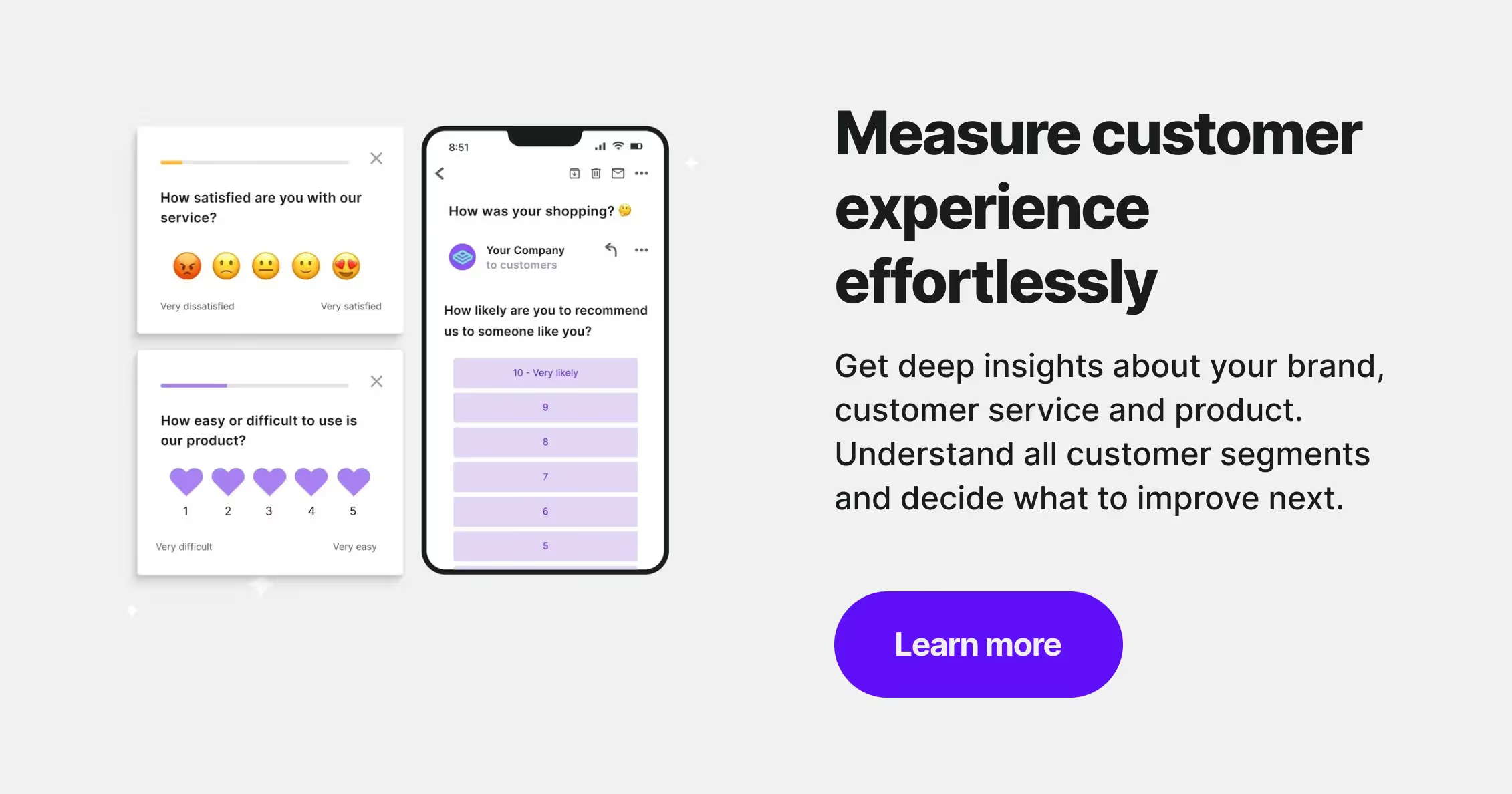
What is customer experience transformation?
Customer experience transformation can be defined as the process of rethinking and redesigning customer service to meet changing customer expectations. To put it short: Today, you have a cross-functional team who takes care of customer requests or sells your products. It works just right – you meet customers, or clients reach out to you, you solve their problems or seal the deals, and everything is fine.
However, to build trust, foster customer loyalty, and create long-lasting customer relationships, you need a positive service culture throughout the entire journey of your clients and all of the channels that they use. This is where customer experience transformation enters the party.
What does customer experience mean for businesses?
It means that businesses must continuously evaluate their customers’ needs and desires and make changes accordingly to improve their interactions with the brand. It's often a huge change for organizations – each department, C suite as well, need to transform to deliver customer experiences like never before. And this poses a challenge, since some organizations may think that they are already doing a great job here, and don't need any digital transformation or new processes. Hence, they don't want to make another investment or introduce extra audits within their companies.
To dispel these doubts, look at your own preferences. Would you be truly happy today with the service you got 5 years ago from a particular brand, or would you maybe expect a little more today? Exactly.
You may have been amazed by the opportunity to contact support on the phone 15 years ago. Today, you want to contact support on live chat – and get your answer in seconds. This proves that expectations are always transforming, so your business has to keep up all the time. And never stop striving for improvement.
If you're struggling to provide outstanding customer service, retain customers, and attract new ones, you simply need customer experience transformation for business success. Customer experience transformation should be seen as an investment, not just an expense of costs, workforce, and resources. Working on even a few elements today can bring you a lot of business benefits in the future. Most companies are still not aware of it – and that's your chance to sparkle.
What is a customer experience transformation framework?
The CX transformation framework is a concept that helps businesses assess their current customer experience, identify areas for improvement, and implement changes that will drive customer satisfaction. Following this approach is an excellent starting point if you're looking for ways to become one of the customer experience leaders.
The framework has four essential components:
- Vision and Strategy
- Employee Collaboration
- Operations
- Technology.
Let's take a closer look at each one.
Vision and Strategy
The first step for your customer experience transformation efforts is to create a company's vision and strategy for your business. Having a shared vision can help you set your goals and objectives, as well as make a plan for how you will achieve them.
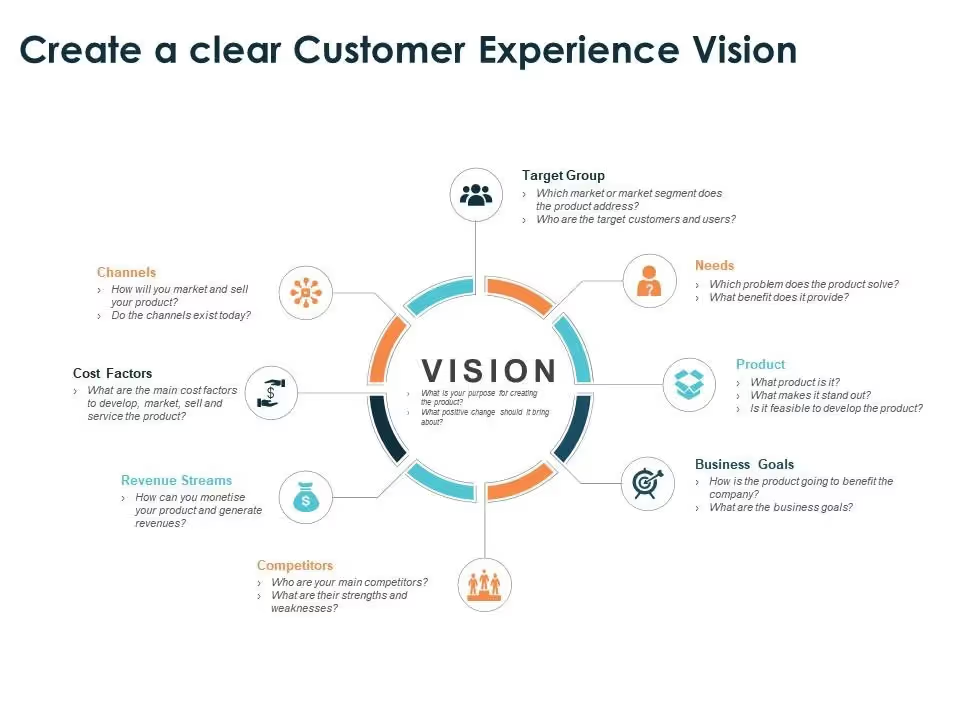
Employee Collaboration
The second step is ensuring that your employees align with your CX vision and strategy. This means building a customer-centric culture where everyone is focused on delivering an excellent customer experience. Within a collaborative environment, your team can share ideas and best practices. Needless to say, this can also positively impact employee experience across different departments in your organization.
Operations
The third step is to review your current operations and existing systems to find potential bottlenecks in your business model. This may include changes to the way how you serve customers, how you plan customer journeys, or even how you handle technical capabilities in your B2B customer experience. The goal should be to develop processes for better customer engagement, and procedures that foster collaboration within your team.
Technology
The fourth and final step is to implement the right technology to support your CX transformation. Since we, fortunately, live in the light of digital transformation, we have many tools and services available at our disposal.
Your tech stack should include:
- customer relationship management (CRM) software,
- live chat tools,
- customer experience optimization tools
- customer feedback platforms.
Building a specific toolset contributes to better business processes and getting more customer insights for continuous improvement.
Transforming Customer Experience - 5 Benefits
Better results
A customer-centric approach has been proven to drive better business results.
Companies with a customer experience mindset drive revenue 4-8% higher than the rest of their industries.
Bain & Co
Companies that focus on CX are more likely to achieve their desired outcomes and see an improvement in loyalty and retention rates.
Increased flexibility and agility
Working on a better customer experience can also make your business more flexible and agile. This is because you will be constantly trying to improve the experience your customers receive, which requires a certain amount of flexibility.
Better customer retention and lifetime value
CX transformation has an impact on improving customer retention and lifetime value. Even one happy customer already helps you reduce customer turnover, as they tend to stick with your business for the long run. And even if they do try to churn, you can try and find out why they made this decision before they stop being customers.
Improved customer satisfaction
Focus on customer experience can generate a 20-30% increase in customer satisfaction. (McKinsey & Co.)
When you make the overall experience of your customers a priority, they can get more satisfied with your business in no time. Using the right building blocks for improving each interaction can lead you to build a loyal community around your business.
Strategies for driving customer experience transformation
1. Collect customer metrics and insights
Any company that wants to provide the best possible experience for its customers, needs to collect customer metrics and use those insights to drive transformation. After all, how can you improve the customer experience if you don't know what your customers want and need?
CX transformation starts with customer understanding. To deliver delightful experiences at every touchpoint, you need to know what your customers are looking for. Using client feedback data to generate insights is the best way to accomplish this.
You can do that through surveys. Survicate, for instance, is one of the many platforms you can use to collect insights about your client base.
You can choose from a variety of templates that will help you reach higher conversion rates. Ship quick email or link surveys, or use building blocks for more advanced surveys to squeeze all the data you can. On top of that, Survicate can be integrated with many popular tools such as MailChimp, Slack, and HubSpot to form a powerful software ecosystem.
Another way to collect insightful feedback is through interviews. This qualitative data can be used to supplement your quantitative data and give you a more well-rounded view of what can be changed. Make use of customer journey planning as well. Mapping touch points and pain points in one place can help you implement change and unlock new capabilities for delivering more, and better throughout the customer experience lifecycle. If you know who, what, when, how, and why now, you can make more informed decisions in the future.
Analyze it carefully – all data will act as fuel to help you transform the way you think of customer experience.
2. Align your CX initiatives with your business
Customer experience is not a siloed initiative. It should be integrated into all aspects of your business, from product development through marketing to client service – both for updating old and implementing new processes.
That's why you need to see if it clicks with your goals and KPIs. Doing so will help you ensure that your CX efforts are driving tangible results for your business. Create a quick action plan that outlines your initiatives and how they go along with what you want to achieve as a business. This will help you communicate your plans to stakeholders and get buy-in for your initiatives.
How to achieve that?
- Start by identifying your objectives and leadership roles – along with responsibilities and milestones.
- Continue with mapping out the customer journey. Identify where you stumble upon inherent inefficiencies and what initiatives will help you achieve those goals.
- Prioritize your initiatives and create a timeline for implementation. Remember to include metrics that you can use to track progress and measure success.
For example, if your goal is to increase customer retention, you might want to focus on initiatives that boost the onboarding experience or reduce churn. Or, if your goal is to increase sales, you are set to concentrate on initiatives that improve conversion rates or average order value.
3. Turn customer data into building blocks for a better customer journey
You have data. You have business goals. You know where you want to go – now you simply need to go there. It's high time to start making improvements to the CX. Data doesn't lie. It will tell you exactly where the pain points are, what to focus on in terms of technology improvements.
Rome wasn't built in a day. Begin by implementing small changes that have a big impact on the outcome. These may be:
- website changes – if you notice your website visitors don't take the required action, try moving a CTA button above the fold (if it's not there already) or adding a feedback button in a noticeable place.
- mobile app changes – if you realize your users don't sign up with their emails, enable social login if applicable. Use mobile surveys to check your performance in this area.
- product changes – if many customers reach out to you asking about a particular feature, maybe it's high time for your organization to finally implement it?
- client support changes – if your service representatives get low ratings, verify their First Call Resolution rates.
Implementing goes with tracking – so even if it's a cosmetic change, you need to support it with metrics to further evaluate its success (or failure, as it may happen too).
4. Partner with HR and conduct ongoing training for employees
We mentioned before that one of the biggest challenges for implementing any CX transformation strategies is to... actually persuade everyone in your organization to start doing so. And that's even despite having relevant data shouting at you.
Ongoing training is one of the most efficient methods to seed a customer-centric culture in your organization. It can also help you ensure that your employees have the skills and knowledge they need to deliver an exceptional experience. Such meetings should be conducted regularly, both for current employees and new hires.
What should it look like?
- Start with describing (if it's the first meeting) or reminding (if it's another one) about goals
- Focus on data analytics – what do both qualitative and quantitative data tell your organization?
- Check customer experience metrics and KPIs – are they met, and if not, then why?
- Let senior executives share their CX expertise in a form of a few slides or a short speech
- Enable Q&A sessions for those who need to know more
It may include both classroom-style training and hands-on learning opportunities. You may also consider introducing 1-to-1 training with those who are in charge of overseeing the customer experience strategy in your business.
5. Engage employees in customer experience improvement initiatives
Your employees are a critical part of your client experience ecosystem. They are the ones who interact with customers on a daily basis and have the ability to make or break their experiences. That’s why you should engage them and listen to their feedback.
Participating in the process will let them know they have a stake in the success of the initiative. They can feel like an integral part of the transformation which motivates them to improve their performance as well – to deliver a bespoke experience.
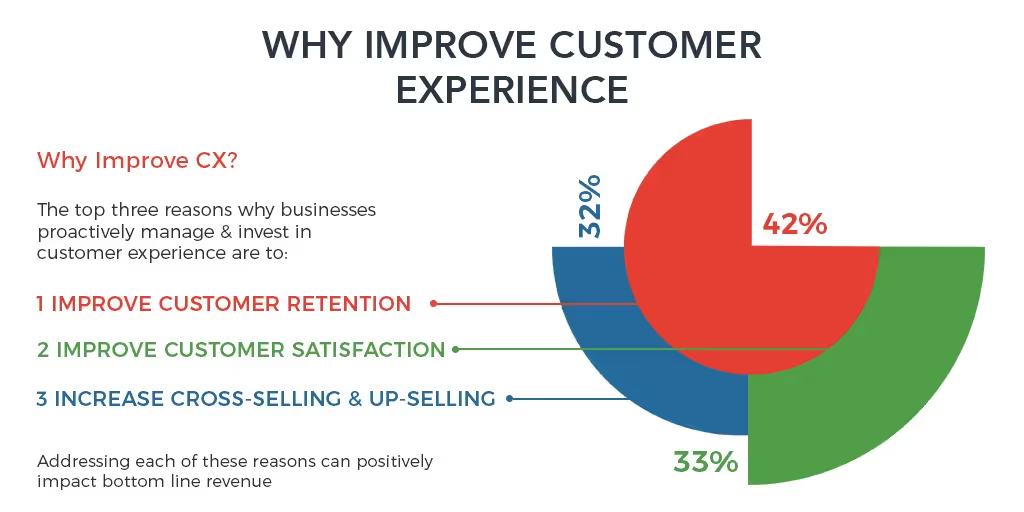
To do so, create employee task forces. These groups can be responsible for brainstorming new ideas, conducting research, or implementing changes.
Provide them with necessary resources. This may be an internal knowledge base, FAQ, call scripts, and templates used for surveys and emails. Don't leave them alone with the mission of "improving CX" – give them both encouragement and materials they can work with. Many employees have natural abilities to be amazing at their roles – they just need a little push from you. But if more push is needed, you can also use rewards and recognition programs. These can motivate employees to go above and beyond in their CX efforts.
6. Create a tech stack
Customer experience transformation is tough – and doing all things manually is not only time-consuming but in fact, impossible. Fortunately, digital technologies come to save the day. And there are quite a few solutions you can leverage:
- chatbots – to deliver 24/7 support. Some modern technologies use artificial intelligence or machine learning to improve results and deliver a more precise and personalized experience. You can even do chat surveys nowadays in tools like Intercom.
- customer feedback automation solutions – to gather feedback on autopilot. With Survicate, you can connect survey data with other software you use, such as Intercom, Zendesk, Salesforce, MailChimp and many more!
- email marketing tools – to send updates and follow-ups to all segments in your database.
In 2023, companies in all industries should definitely make use of them to provide unmatched client service and tailored customer experiences.
Meet customer expectations with CX transformation
Customer experience transformation is a journey, not a destination. Your brand can't start providing it overnight, as it requires preparations across all employees, teams, and procedures you already have in hand. Making the first step is the most difficult part. Begin with small steps towards a better customer experience and you may see differences in no time.
And remember. You're not on this journey alone – we're happy to help your brand get data to act on. Get started today and sign up for Survicate's 10-day free trial to take your first step towards customer experience excellence!








.webp)
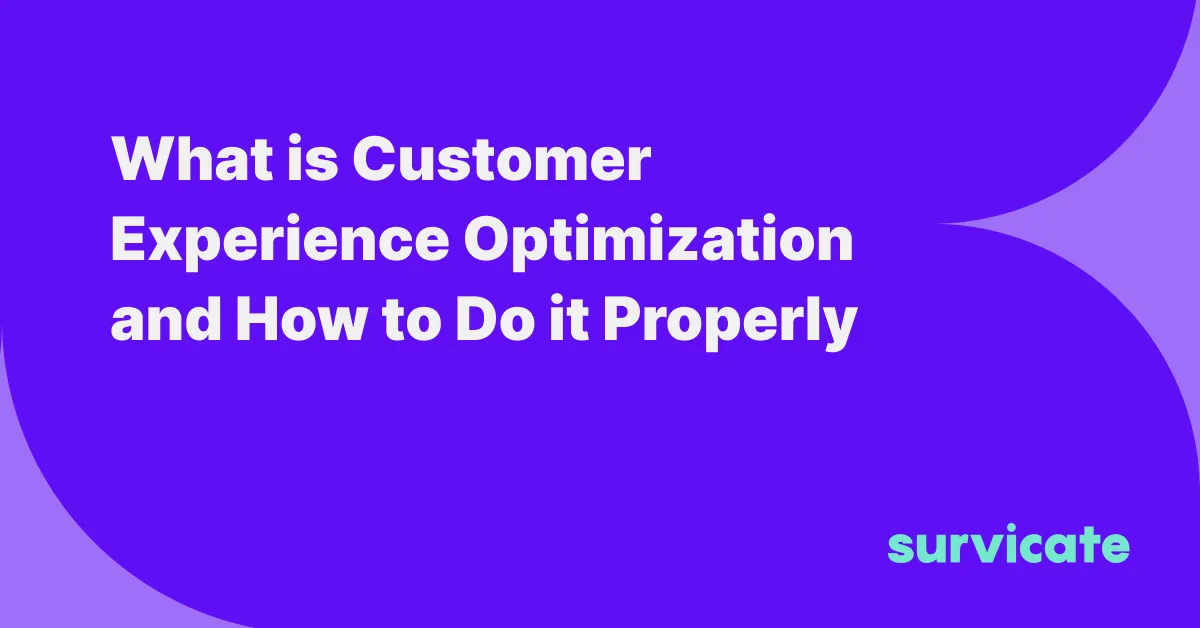

.webp)

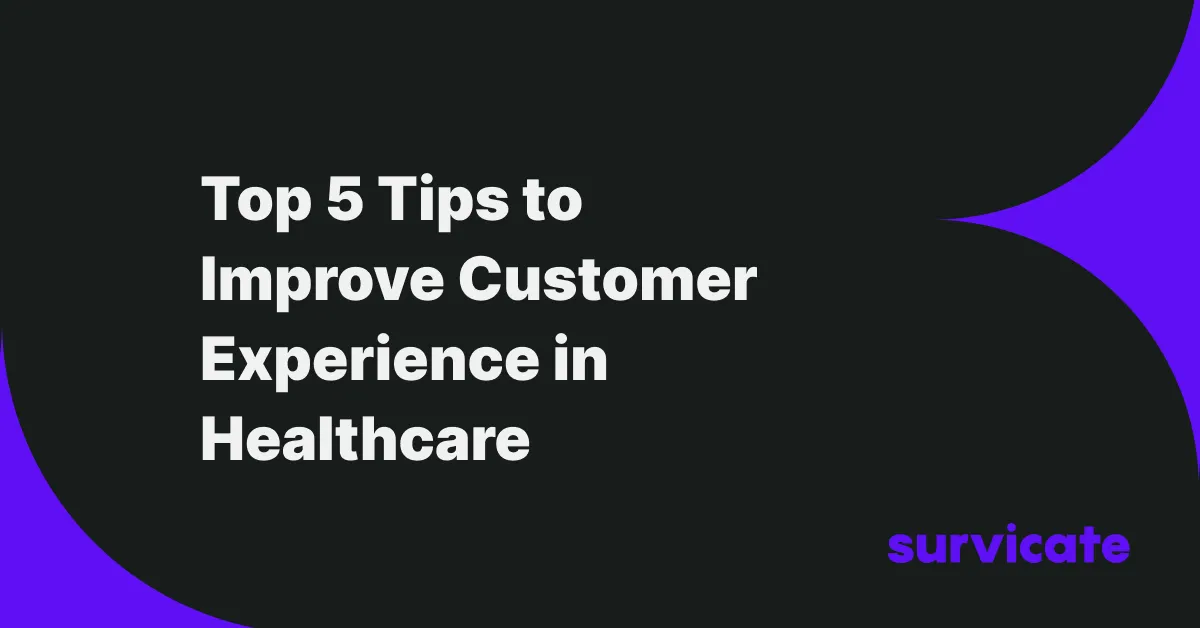
.svg)

.svg)



